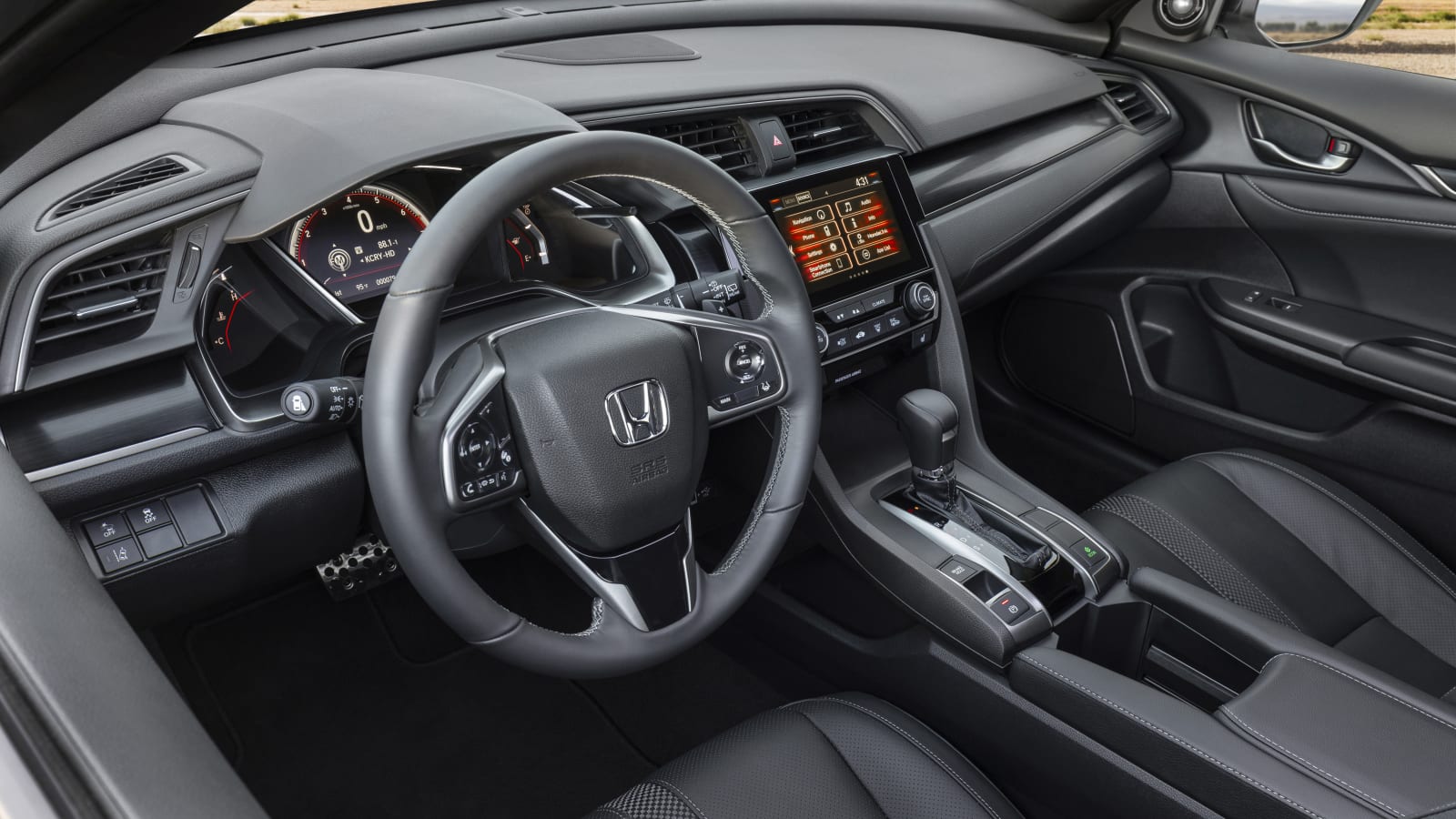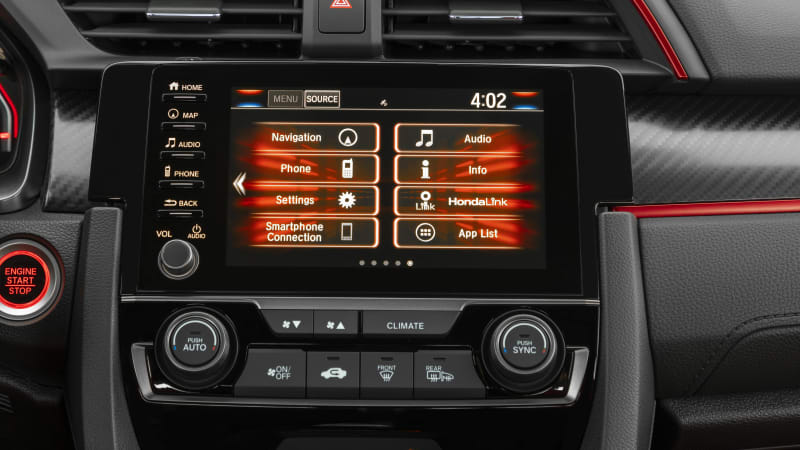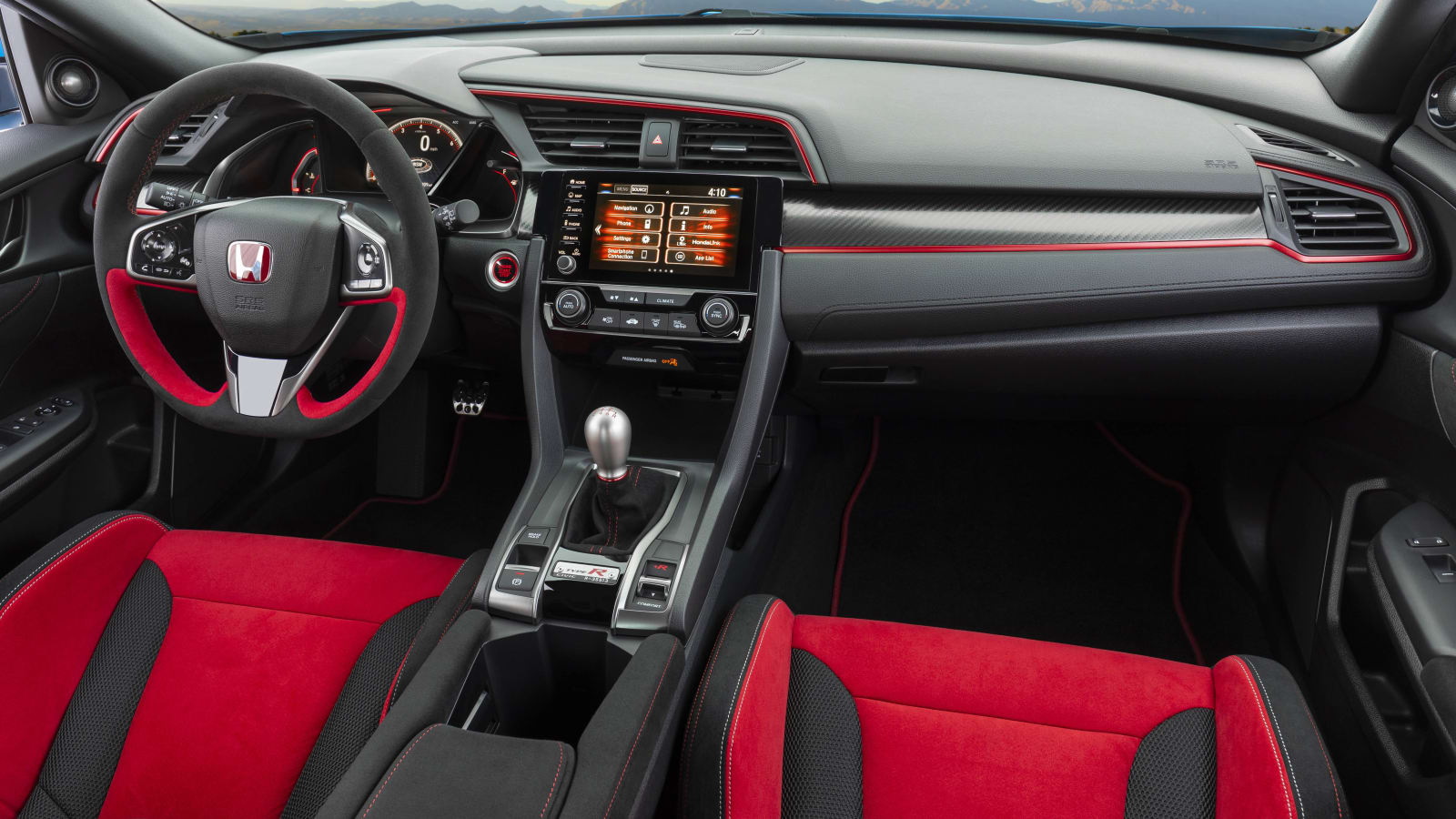Cue up Semisonic, it’s closing time for the current-generation Honda Civic. It sure had a good run, though, as it managed to get back all the mojo that had been lost with its underwhelming and barely competitive predecessor. Available in sedan, hatchback and now-discontinued coupe body styles, along with the Civic Si and Civic Type R performance models, Honda’s definitive compact car returned to its status as a segment leader.
That’s still the case for the 2021 Honda Civic despite the fact that it’s about to be replaced. It remains spacious for the segment and boasts a clever, functional interior. The driving experience is refined with nicely balanced ride and handling, while the available turbocharged engine upgrade provides class-leading acceleration and fuel economy. There’s also the matter of Honda’s low ownership costs and high retained value. Now, the Civic does show its age with its frustrating infotainment and safety technologies, as well as its interior’s materials quality and design (especially compared to the Mazda3 and Nissan Sentra). We also never warmed to the busy, vent-riddled styling (the Honda Insight hybrid manages to be much prettier despite sharing the same bones). Though we know very little about the next-generation Civic, we do expect these issues to be addressed.
What’s new for 2021?
What’s new? More like what’s gone. As Honda prepares for an all-new 11th-generation Civic to debut next year, it has trimmed the ranks for 2021. The Coupe is completely gone, foreshadowing the fact that it won’t live to see the next generation. We’ll miss it, but only 6% of Civic buyers chose one, so we’re obviously in the minority. The Civic Si is also gone, but thankfully only for 2021. It will be replaced by a next-generation model, albeit as only a sedan and possibly a new hatchback version.
The Civic Type R, however, does continue for 2021 and will even offer a new Limited Edition model that lives up to its name with a mere 600-unit run. It gets a special Phoenix Yellow paint job, various black accents and 20-inch BBS forged-aluminum wheels, plus recalibrated steering and a significant 46 pounds of weight reduction (it also loses a bunch of standard features in the process from automatic emergency braking down to the rear windshield wiper).
What’s the Civic interior and in-car technology like?
The Honda Civic has a spacious interior that feels even more so thanks to a low dashboard and thin pillars. However, the design is starting to show its age, and its materials quality is lower than what you’ll find in a Mazda3, Nissan Sentra or upper trim levels of the Toyota Corolla. The seats in normal Civics are also a bit on the flat side, but they do feature stylish upholstery and have a reasonable amount of cushion. The Type R (pictured below) has more aggressive front seat bolsters that hold you snugly, but aren’t so firm that you feel pinched or poked.
All Civics get a digital display for the tachometer, speedometer and additional driving information, and the readouts are under deep cowls. Two types of infotainment systems are available. Low-trim models get a very basic system with a small screen and old-fashioned physical buttons and knobs for navigating through different functions. It does feature Bluetooth, a USB port and a media player interface, but is not compatible with Apple CarPlay or Android Auto. The second version comes with a 7-inch touchscreen, which is sluggish and not user friendly. We’re not alone in our dislike for it, either, as owners have been hammering it for years in surveys. The good news is that it does include Apple CarPlay and Android Auto, which are both much easier to use than the Honda software.
How big is the Civic?
Inside, you’ll find the Civic offers more passenger and cargo space than most. In fact, it challenges some midsize cars. Leg- and headroom up front are exceptional, while folks of all sizes should be able to fit comfortably in the back (though its low seat somewhat hampers comfort).
Storage of small items is superb thanks to a clever center console that features a deep bin, a sliding cupholder unit and a large, grippy area for smartphones. For large items, both the sedan and hatchback provide best-in-class cargo room with the rear seats up. That said, the hatchback is atypical (pictured below right), as its cargo area is much deeper and trunk-like than a Volkswagen Golf, for instance, but it’s not as tall, restricting its usefulness for especially bulky items. We think it’ll be an acceptable trade-off for most.
What’s the Civic’s performance and fuel economy?
The Honda Civic sedan in LX and Sport trims get a naturally aspirated 2.0-liter inline-four making 158 horsepower and 138 pound-feet of torque. It’s paired with either a six-speed manual transmission or a continuously variable automatic (CVT). Those numbers are on par with a number of compact cars, including the Hyundai Elantra and Subaru Impreza. It’s not a particularly exciting engine, but it is extremely smooth and refined. Despite packing the least power, the 2.0-liter Civics are not the most efficient. The manual versions get 29 mpg in combined driving, the Sport CVT gets 32 mpg and the LX CVT gets 33 mpg.
The most-efficient Civics are those with the 1.5-liter turbocharged four-cylinder that produces 174 hp and 162 lb-ft (the Sport hatchback produces a little more at 180 hp and 177 lb-ft). In the sedan, it gets 36 mpg in combined driving. The equivalent hatch gets 34 mpg. Note that fuel economy dips a little lower in the Touring trim levels and manual-equipped Sports.
The Honda Civic Si is shelved for 2021, leaving the pricier, more hardcore Civic Type R as the performance upgrade. It gets a turbocharged 2.0-liter engine that makes 306 horsepower and 295 pound-feet of torque. Its fuel economy falls to 25 mpg combined.
What’s the Civic like to drive?
The average Honda Civic, regardless of whether you pick the sedan or hatchback, is a thoroughly well-rounded car to drive. The ride is comfortable and well-damped. The car feels light and nimble, cornering eagerly with little body roll. Steering is light but responsive and precise. The Civic also has a reasonably quiet and refined cabin.
These normal Honda Civics come with either a naturally aspirated four-cylinder or a turbocharged one. Both are smooth and quiet, but the turbo engine provides both better fuel economy and stronger acceleration. Both engines can be had with a manual transmission, and in Honda tradition, the stick is slick. The other transmission option is a CVT, which cause some drone during acceleration and makes both engines feel considerably different since they spend more of their time at lower rpm. Still, it’s smooth and responsive enough, and unlike some other CVTs, isn’t objectionable.
The Civic Type R is a superlative hot hatch. Its turbocharged 2.0-liter engine provides loads of power and torque, and it’s delivered in a shockingly smooth and civilized manner. It dives for corners and the steering feels millimeter-precise. This is a car that’s easy to drive fast and feels rewarding when you do so. Surprisingly, ride quality can almost be described as comfortable thanks to a two-mode adaptive suspensions. It’s a very livable hot hatch that belies its absurd styling.
What more can I read about the Honda Civic?
2020 Honda Civic Type R First Drive
There were a number of updates made to the Civic Type R last year. We detail them in this first-drive review. We spent even more time with the 2019 version and despite the updates, our opinions remain broadly the same.
2020 Honda Civic Interior Driveway Test
Although this was done with the now-discontinued Coupe Si Coupe, the observations about the infotainment system, material quality and clever storage all apply to the surviving sedan and hatchback.
What features are available and what’s the Civic’s price?
Pricing for the sedan was not available at the time of this writing, but given the Hatchback’s price increase, we would expect it to start at around $21,050 for the base LX. Also keep in mind that the Honda Insight is basically just the hybrid version of the Civic, and may actually be the smarter choice.
Standard feature content is quite generous, boasting standard accident avoidance tech, automatic climate control, adaptive cruise control, and Bluetooth and USB connectivity. Just keep in mind that the base LX and Sport trims have a less powerful and efficient engine in the sedan and coupe. The hatchback comes standard with the turbo and the CVT is a $800 option on those trims specified (a six-speed manual is the standard trim in those instances). All price below include the $955 destination charge.
Civic Hatchback Pricing
LX: $22,955
Sport: $24,055 (CVT optional)
EX: $25,455
Sport Touring: $29,355 (CVT optional)
Civic Type R Pricing
Base: $38,450
Limited Edition: $44,950
What are the Civic’s safety equipment and crash ratings?
Every 2021 Honda Civic comes standard with forward collision warning, automatic emergency braking, lane-departure warning, and lane-keeping assist. Automatic high-beams are standard on the Civic sedan, but are optional on the hatchback. The only other real safety option is LaneWatch (standard on EX and higher), which is Honda’s alternative to blind-spot monitoring. It features a camera on the passenger-side mirror that displays what’s in the driver’s blind spot on the center stack. We prefer conventional blind-spot warning that just shows a little light in the side mirrors and doesn’t hijack the infotainment system when your turn signal is on at a traffic light. The rest of the Civic’s driver assistance systems are also of an earlier generation than what you’ll find in an Accord or Odyssey. The lane-keeping assistance and adaptive cruise control in particular are rather rudimentary.
The government gave the Honda Civic sedan and hatchback five stars for all crash tests including front, side and rollover. In Insurance Institute for Highway Safety crash testing, the sedan earned the highest “Good” rating in every crash test. The hatchback crashed just as well, though the IIHS hasn’t tested it for passenger small-overlap crashes. The automatic emergency braking features earned top marks as well. Headlight performance was rated the lowest as “Poor” in all models with either projector lights or LED lights. Child seat LATCH anchor access was rated the second-highest “Acceptable” in all models.
Related Video:








